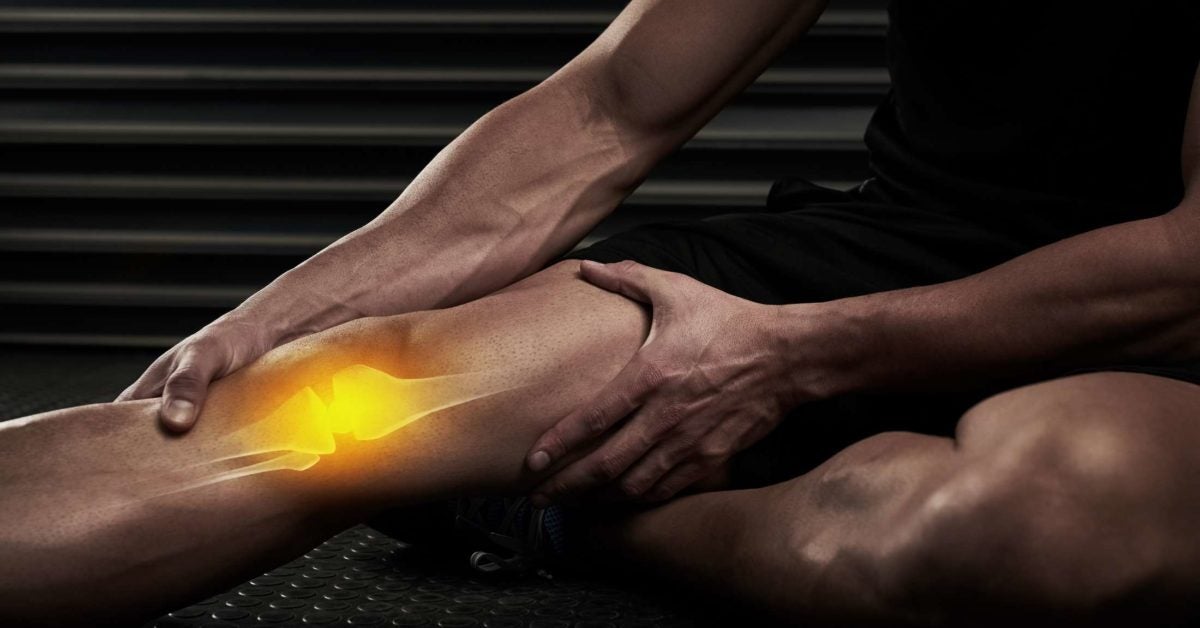

Patients often note that the pain is aggravated while running down hills, lengthening their stride, or sitting for long periods of time with the knee in the flexed position. Typically, the pain begins after the completion of a run or several minutes into a run however, as the iliotibial band becomes increasingly irritated, the symptoms typically begin earlier in an exercise session and can even occur when the person is at rest. With time and continued activity, the initial lateral achiness progresses into a more painful, sharp, and localized discomfort over the lateral femoral epicondyle and/or the lateral tibial tubercle. These patients frequently are unable to indicate one specific area of tenderness, but tend to use the palm of the hand to indicate pain over the entire lateral aspect of the knee. The primary initial complaint in patients with iliotibial band syndrome is diffuse pain over the lateral aspect of the knee. Strengthening of the hip abductors has led to symptom improvement. Hip abductor weakness seems to contribute to the development of iliotibial band syndrome. Some observational studies 4, 6 have identified potential risk factors for the development of iliotibial band syndrome, including the following: preexisting iliotibial band tightness high weekly mileage time spent walking or running on a track interval training and muscular weakness of knee extensors, knee flexors, and hip abductors. Excessive pronation causing tibial internal rotation and increased stress in the iliotibial band was believed to be a factor in the development of iliotibial band syndrome however, the literature does not support this theory. Few studies 3 – 7 have shown any direct relationship between biomechanical factors and the development of iliotibial band syndrome. 2ĭespite a clear pathophysiology, it is unclear why this syndrome does not affect all athletes. In patients with iliotibial band syndrome, magnetic resonance imaging (MRI) studies have shown that the distal iliotibial band becomes thickened and that the potential space deep to the iliotibial band over the femoral epicondyle becomes inflamed and filled with fluid. Iliotibial band syndrome is caused by excessive friction of the distal iliotibial band as it slides over the lateral femoral epicondyle during repetitive flexion and extension of the knee resulting in friction and potential irritation. The band originates at the lateral iliac crest and extends distally to the patella, tibia, and biceps femoris tendon ( Figure 1). The iliotibial band is a thick band of fascia that is formed proximally by the confluence of fascia from hip flexors, extensors, and abductors.
/Depositphotos_19871399_original-56a05f523df78cafdaa14cd1.jpg)
Iliotibial band syndrome is a common knee injury that usually presents as lateral knee pain caused by inflammation of the distal portion of the iliotibial band occasionally, however, the iliotibial band becomes inflamed at its proximal origin and causes referred hip pain. A small percentage of patients are refractory to conservative treatment and may require surgical release of the iliotibial band. Corticosteroid injections should be considered if visible swelling or pain with ambulation persists for more than three days after initiating treatment. Most patients respond to conservative treatment involving stretching of the iliotibial band, strengthening of the gluteus medius, and altering training regimens. Treatment requires active patient participation and compliance with activity modification. Although iliotibial band syndrome is easily diagnosed clinically, it can be extremely challenging to treat. Iliotibial band syndrome can cause significant morbidity and lead to cessation of exercise.

In some athletes, repetitive flexion and extension of the knee causes the distal iliotibial band to become irritated and inflamed resulting in diffuse lateral knee pain. The iliotibial band is a thick band of fascia that crosses the hip joint and extends distally to insert on the patella, tibia, and biceps femoris tendon. The most common symptom is lateral knee pain caused by inflammation of the distal portion of the iliotibial band. Iliotibial band syndrome is a common knee injury.


 0 kommentar(er)
0 kommentar(er)
